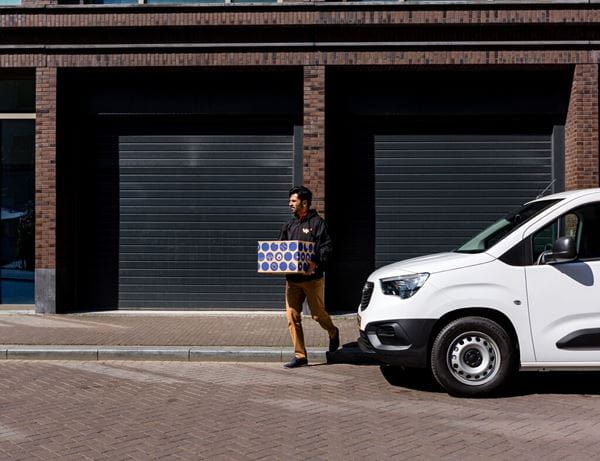.jpg?rev=82ec5428179e4ff59e39876b8e3c007c&mw=3276)
Fleet Risk: What are the biggest risk factors at-work drivers?
Using the latest Department for Transport data, we’ve identified some of most common contributors to vehicle collisions, with hints to help drivers avoid them.
The UK has one of the world’s safest road networks, and it’s getting better all the time. Government statistics show reported injuries almost halved between 2012 and 2021, from 158,787 to 88,623, with safer vehicles and better traffic management helping to protect drivers.
However, driving for work remains a risky activity for employees and collisions can be disruptive for businesses. Human impact aside, the Department for Transport has calculated an average cost of £2,522 for cases without any injuries, rising to £2.1m per person for fatalities.
We’ve dug into the DfT’s reported collision statistics for 2021 to find the most common contributory factors that might affect fleets, and suggested some simple ways to reduce those risks.
1. Avoid distracted driving
Drivers’ failure to look properly was by far the biggest contributing factor in vehicle collisions during 2021, accounting for 23,816 reported and 343 fatal incidents. It’s important for drivers to check their surroundings thoroughly before making a manoeuvre, especially for vans where visibility is more compromised than in a car – 976 collisions were at least partly caused by inadequate blind spot checks.
Minimising distraction is also important. In 2021, 2,336 collisions involved the driver being distracted by something within the cabin, while 440 involved use of a mobile. Laws about mobile phone use were sharpened in May 2022, extended to include any hand-held functions and enforced by fines of up to £200 and six penalty points. Drivers can stay legal by using a hands-free kit, as long as it doesn’t obscure their view of the road, but employers should consider discouraging them from taking calls while at the wheel.
2. Give drivers enough time
Employers can’t incentivise drivers if it encourages rule-breaking, and it’s crucial to avoid situations where they feel stressed or rushed. Careless, reckless or hurried driving was a factor in 12,023 collisions and 217 fatalities in 2021, so scheduling routes including likely traffic conditions and time to park safely can help encourage safer behaviour at the wheel.
The consequences of poor time management can be severe. During 2021, 8,065 collisions (314 of which were fatal) involved a driver who was either exceeding the speed limit or going too fast for the road conditions, while tailgating was a factor in 3,003 incidents. It’s also worth noting that driving too quickly is 50% more likely to be a factor in car-related collisions than it is for vans.
3. Make sure employees are fit to drive
Alcohol and drugs (including prescription medicines) can impair drivers’ judgement and reaction times. Drink driving contributed to 4,297 reported collisions and 11% of fatalities (137 incidents) during 2021, and fleets should consider a zero-tolerance approach if drivers are caught. Drug-related collisions are less common, at 1,661 incidents, but it’s important for employees to seek medical advice and declare any prescriptions to their employer before they drive.
Tiredness also shouldn’t be overlooked. Fatigue was a factor in 1,195 collisions in 2021, and two thirds of those incidents were on motorways and A-roads where driving is more repetitive. Although most cars and light commercial vehicles don’t have limits on driving hours, the Highway Code advises a 15-minute break after every two hours at the wheel to help them stay alert.
4. Brief drivers about local dangers
Every fleet’s risk profile is unique, but collision rates and severity vary enormously between different road types. Almost half (47%) of all fatal collisions in 2021 were on rural roads, despite these accounting for just 18% of all incidents. Urban roads had a much lower fatality rate, due to the lower speeds, but 78% of reported collisions were in towns and cities and 72% of them involved a serious injury or death.
Employees should be advised to take extra care in crowded urban areas. There were 4,375 collisions in 2021 involving a pedestrian failing to look properly before crossing the road, and 39% of those (1,710 incidents) resulted in a serious or fatal injury. Drivers can also get three penalty points and be fined if they leave vehicles in a position which puts other road-users at risk – such as obstructing a crossing.
5. Adapt to your surroundings
Drivers don’t have to be breaking speed limits to be a hazard. During 2021, 3,147 collisions were at least partly caused by drivers who were within legal limits but hadn’t adjusted to the road conditions (such as visibility, grip or congestion) and 120 of those involved a fatality.
The weather can create numerous risky scenarios for drivers. Slippery roads contributed to 4,418 collisions in 2021, as vehicles take twice as long to stop when the surface is wet, and some conditions can affect visibility too. The data shows 1,774 collisions where drivers were dazzled by sunlight, and 1,186 where rain, sleet, snow or fog affected their view of the road.
6. Allow time for regular checks
Fleets operate some of the hardest working vehicles on UK roads, so enforcing a policy of regular checks is an important part of operating a safer fleet. Vehicle defects contributed to 1,319 collisions during 2021, with brakes (558 collisions), tyres (347 collisions) and suspension (189 collisions) topping the list. Besides the risk of injury, drivers can receive three penalty points and a fine if a roadside inspection identifies safety-critical faults.
We advise scheduling a 10-15-minute inspection into each shift, with a checklist of defects to look out for and a structure in place to report problems to their employer. We’ve outlined some key points here. Reporting issues early can also prevent breakdowns and unplanned downtime for vehicles, both of which have cost implications for fleet operators.





